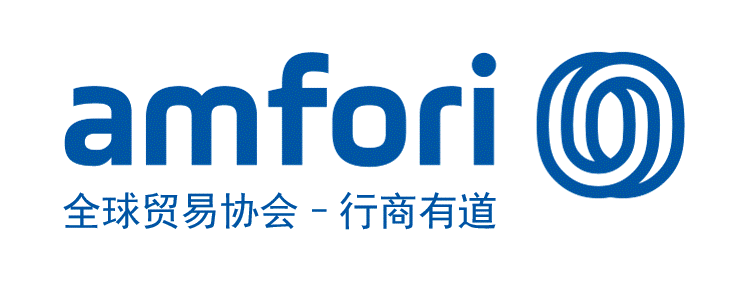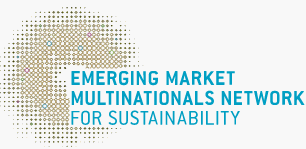Home > Best Practices > Best Practices List >
China Overseas Holdings Limited :Building whole-process excellent green houses to boost quality growth
2016-08-03Sino-Swedish Corporate Socialadmin0010
Company Profile
China Overseas Holdings Limited (also referred to as COHL or the Group), a subsidiary of China State Construction Engineering Corporation, started operations in Hong Kong in June 1979. The Group has five companies listed and mainly deals in property, construction and property management. By the end of 2015, the total asset value of the Group has reached RMB 427 billion.
Land and Investment Limited. Founded in Hong Kong, the company has grown in the city and eventually expanded to Macau, and now thrives in Mainland China. Upholding the project development principle of “Each and every detail of each and every project”, the company has introduced the five generations of products through independent research and development, thus forming a fine management system which covers the entire property development process. The company has created the leading brand “China Overseas Property” and established a nationwide balanced market distribution network, with major focuses on Hong Kong and Macau regions, the Yangtze River Delta, the Pearl River Delta, Bohai Rim, Northeast and Midwestern part of Mainland China. The company has developed its business into Hong Kong, Macau, over 50 economic vibrant cities in Mainland China, London, England, and Jersey, the United States.
Challenges
The property industry is rapid in development and high in consumption, especially in building energy consumption. Statistics show that by 2020, China’s population will have reached the peak of 1.5 billion. If the total building area were not well controlled, and the energy-saving buildings were not promoted widely, the total energy consumption would exceeded 1 billion standard coal annually. The transformation of economic development mode, requirements of industrial development, and the brand-new energy-saving market, all urge the property industry to transform and upgrade to a green one.
Solutions
As one of the earliest property enterprises which have launched the green property research and development and put it into practice in China, China Overseas Property took the lead in introducing the overseas high-rise building construction experience of high-density and high floor area ratio into China as early as the 1980s and 1990s, which saves building land greatly. China Overseas Property advocates the adoption of a low-cost and high-efficiency energy-saving technique, and takes the idea of passive energy-saving as a leading principle even at the phases of project positioning and project planning and designing, and then runs it through the entire process of project development.
Green property research and development and institutionalization
In 2007, on the basis of China’s Green Buildings Evaluation Standard and the LEED standard issued by the US Green Building Council, the company introduced China Overseas Property Green Building Technique Guidelines and published China Overseas Property Green Building Implementation Rules. These two standards and regulations have become the green regulations implemented in the company, as well as the blueprint of China Overseas Property Green Building White Paper, instructing the development of its whole-process green fine products.
Application of the whole life-cycle green techniques
China Overseas Property has gradually turned from the wide application of green techniques in projects in the early days to carry out green research and development and practice from the perspective of the use of whole life- cycle green techniques. For instance, during from 2009 to 2013, project the building area of the company meeting or expected to meet the nation’s starred green building standard in COHL’s projects reached 2.8 million square meters. According to standards of different starred green buildings, these projects adopted different water- saving and energy- saving materials, equipment and techniques, like solar photovoltaic power generation system, water reuse system, rainwater collection system, household air system, and lighting control system, correspondingly.
During the designing phase, a project has to go through the green design evaluation, which takes the natural condition, social condition as well as the project positioning all into consideration, and then is planned and designed according to different green levels. During the planning and designing phase, computer-based simulation and analysis are carried out, and the idea of passive energy-saving is adopted in an effective way. The project of Shenzhen Zhonghai Xiangmi Lake is a good example. Its plane and section design enables the residents there to use air-conditions less often or even not at all, in the blistering summer day. Based on practice in several residence and office projects and re-research on the feedbacks, the company reaches the goal of green integration technique and finally forms its core techniques — five systems and ten technical standards. At the same time, China Overseas Property also makes green construction plan, launches green management, and increases the weight of green and environmental-friendly material in bidding.
Achievements
Social benefits
Reducing energy and resource consumption during the whole life cycle of buildings
As the Group’s first whole life-cycle green building technique demonstration project, the Suzhou China Overseas international community project 233-2 (also known as the Spring project), accepted in December 2014, has achieved the goal of improving energy-saving rate to 80%, renewable resource utilization rate to 50%, water-saving rate to 10%, non-traditional water utilization rate to 30%, and renewable building material utilization rate to 30%. As for the electricity alone, it can save 31,000 kilowatt electricity. The techniques adopted in this project, like solar heater system, rainwater reuse system, energy saving system, and water-saving irrigation system, have been widely used in the Group.
Contributing experience for industrial development
For many years, China Overseas Property has been promoting research on green buildings and has made many substantive achievements, which contribute valuable experience and techniques for the development of the industry. Among these, China Overseas Green Building Technique Guidelines provide a detailed description of the development idea and the implementation technical rules of green buildings, which is highly praised by Ministry of Housing and Urban-Rural Development of China.
Economic benefits
As the group leader of green property study group of China Green Building Council, the Group is elected into Hong Kong’s Hang Seng Corporate Sustainability Index, and its research and practice in green buildings is highly appreciated.
By the end of 2015, the company has obtained more than 40 certifications, including China starred green building certification, the US LEED certification, Britain BREEAM certification, with a total building area of exceeding 4.5 million square meters. In the whole year 2015, 9 of the company’s projects received green building certification, namely 3 three-star projects, 2 two-star projects, 3 one-star projects, and 1 BREEAM certification project. The added value of green buildings facilitates the increase of the Group’s economic benefits. During the past 5 years (from 2011 to 2015), the turnover of the company grew at a compound rate of 27%, net profit maintained a compound growth rate of 22%, and its value creation capacity stayed ahead of the industry. The creative application of green material, infrastructure and techniques also brings in product competitiveness and product premium.
Prospect
COHL will adhere to the idea of green buildings and try its best to do well in developing the upstream business development. Meanwhile, it will continue playing an exemplary role to drive peer companies to promote green property, and to push upstream and downstream enterprises to conduct research and development focusing on green techniques and green products, so as to realize the transformation and upgrading of the industry.
China Overseas Holdings Limited (also referred to as COHL or the Group), a subsidiary of China State Construction Engineering Corporation, started operations in Hong Kong in June 1979. The Group has five companies listed and mainly deals in property, construction and property management. By the end of 2015, the total asset value of the Group has reached RMB 427 billion.
Land and Investment Limited. Founded in Hong Kong, the company has grown in the city and eventually expanded to Macau, and now thrives in Mainland China. Upholding the project development principle of “Each and every detail of each and every project”, the company has introduced the five generations of products through independent research and development, thus forming a fine management system which covers the entire property development process. The company has created the leading brand “China Overseas Property” and established a nationwide balanced market distribution network, with major focuses on Hong Kong and Macau regions, the Yangtze River Delta, the Pearl River Delta, Bohai Rim, Northeast and Midwestern part of Mainland China. The company has developed its business into Hong Kong, Macau, over 50 economic vibrant cities in Mainland China, London, England, and Jersey, the United States.
Challenges
The property industry is rapid in development and high in consumption, especially in building energy consumption. Statistics show that by 2020, China’s population will have reached the peak of 1.5 billion. If the total building area were not well controlled, and the energy-saving buildings were not promoted widely, the total energy consumption would exceeded 1 billion standard coal annually. The transformation of economic development mode, requirements of industrial development, and the brand-new energy-saving market, all urge the property industry to transform and upgrade to a green one.
Solutions
As one of the earliest property enterprises which have launched the green property research and development and put it into practice in China, China Overseas Property took the lead in introducing the overseas high-rise building construction experience of high-density and high floor area ratio into China as early as the 1980s and 1990s, which saves building land greatly. China Overseas Property advocates the adoption of a low-cost and high-efficiency energy-saving technique, and takes the idea of passive energy-saving as a leading principle even at the phases of project positioning and project planning and designing, and then runs it through the entire process of project development.
Green property research and development and institutionalization
In 2007, on the basis of China’s Green Buildings Evaluation Standard and the LEED standard issued by the US Green Building Council, the company introduced China Overseas Property Green Building Technique Guidelines and published China Overseas Property Green Building Implementation Rules. These two standards and regulations have become the green regulations implemented in the company, as well as the blueprint of China Overseas Property Green Building White Paper, instructing the development of its whole-process green fine products.
Application of the whole life-cycle green techniques
China Overseas Property has gradually turned from the wide application of green techniques in projects in the early days to carry out green research and development and practice from the perspective of the use of whole life- cycle green techniques. For instance, during from 2009 to 2013, project the building area of the company meeting or expected to meet the nation’s starred green building standard in COHL’s projects reached 2.8 million square meters. According to standards of different starred green buildings, these projects adopted different water- saving and energy- saving materials, equipment and techniques, like solar photovoltaic power generation system, water reuse system, rainwater collection system, household air system, and lighting control system, correspondingly.
During the designing phase, a project has to go through the green design evaluation, which takes the natural condition, social condition as well as the project positioning all into consideration, and then is planned and designed according to different green levels. During the planning and designing phase, computer-based simulation and analysis are carried out, and the idea of passive energy-saving is adopted in an effective way. The project of Shenzhen Zhonghai Xiangmi Lake is a good example. Its plane and section design enables the residents there to use air-conditions less often or even not at all, in the blistering summer day. Based on practice in several residence and office projects and re-research on the feedbacks, the company reaches the goal of green integration technique and finally forms its core techniques — five systems and ten technical standards. At the same time, China Overseas Property also makes green construction plan, launches green management, and increases the weight of green and environmental-friendly material in bidding.
Achievements
Social benefits
Reducing energy and resource consumption during the whole life cycle of buildings
As the Group’s first whole life-cycle green building technique demonstration project, the Suzhou China Overseas international community project 233-2 (also known as the Spring project), accepted in December 2014, has achieved the goal of improving energy-saving rate to 80%, renewable resource utilization rate to 50%, water-saving rate to 10%, non-traditional water utilization rate to 30%, and renewable building material utilization rate to 30%. As for the electricity alone, it can save 31,000 kilowatt electricity. The techniques adopted in this project, like solar heater system, rainwater reuse system, energy saving system, and water-saving irrigation system, have been widely used in the Group.
Contributing experience for industrial development
For many years, China Overseas Property has been promoting research on green buildings and has made many substantive achievements, which contribute valuable experience and techniques for the development of the industry. Among these, China Overseas Green Building Technique Guidelines provide a detailed description of the development idea and the implementation technical rules of green buildings, which is highly praised by Ministry of Housing and Urban-Rural Development of China.
Economic benefits
As the group leader of green property study group of China Green Building Council, the Group is elected into Hong Kong’s Hang Seng Corporate Sustainability Index, and its research and practice in green buildings is highly appreciated.
By the end of 2015, the company has obtained more than 40 certifications, including China starred green building certification, the US LEED certification, Britain BREEAM certification, with a total building area of exceeding 4.5 million square meters. In the whole year 2015, 9 of the company’s projects received green building certification, namely 3 three-star projects, 2 two-star projects, 3 one-star projects, and 1 BREEAM certification project. The added value of green buildings facilitates the increase of the Group’s economic benefits. During the past 5 years (from 2011 to 2015), the turnover of the company grew at a compound rate of 27%, net profit maintained a compound growth rate of 22%, and its value creation capacity stayed ahead of the industry. The creative application of green material, infrastructure and techniques also brings in product competitiveness and product premium.
Prospect
COHL will adhere to the idea of green buildings and try its best to do well in developing the upstream business development. Meanwhile, it will continue playing an exemplary role to drive peer companies to promote green property, and to push upstream and downstream enterprises to conduct research and development focusing on green techniques and green products, so as to realize the transformation and upgrading of the industry.
Best Practices
- The 100-year brand — Air Liquide also has a sense of juvenile
- Beijing Public Transportation Corporation: Developing green transportation to build a harmonious and livable capital
- CGN: Building a modern factory in barren deserts and developing a new win-win cooperation model along “Belt and Road”
Upcoming Event

All the materials on the site “Source: XXX (not from this site)” have been reprinted from other media. They do not imply the agreement by the site.
All the materials with “Source: CSR-China Website” are the copyright of CSR-China Website. None of them may be used in any form or by any means without permission from CSR-China Website.
GoldenBee Official WeChat
Copyright © Csr-china.net All Right Reserved.
京ICP备19010813号










